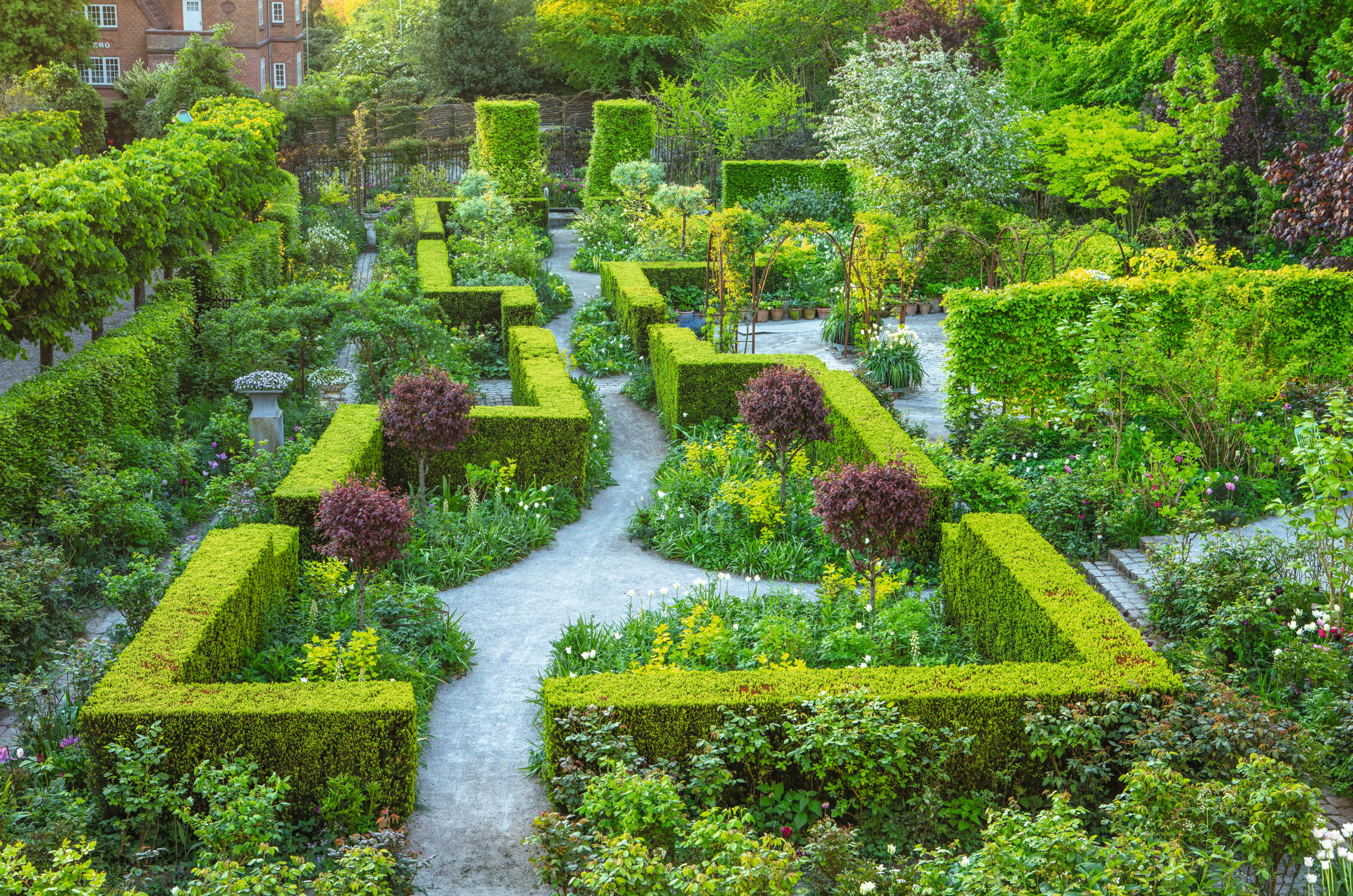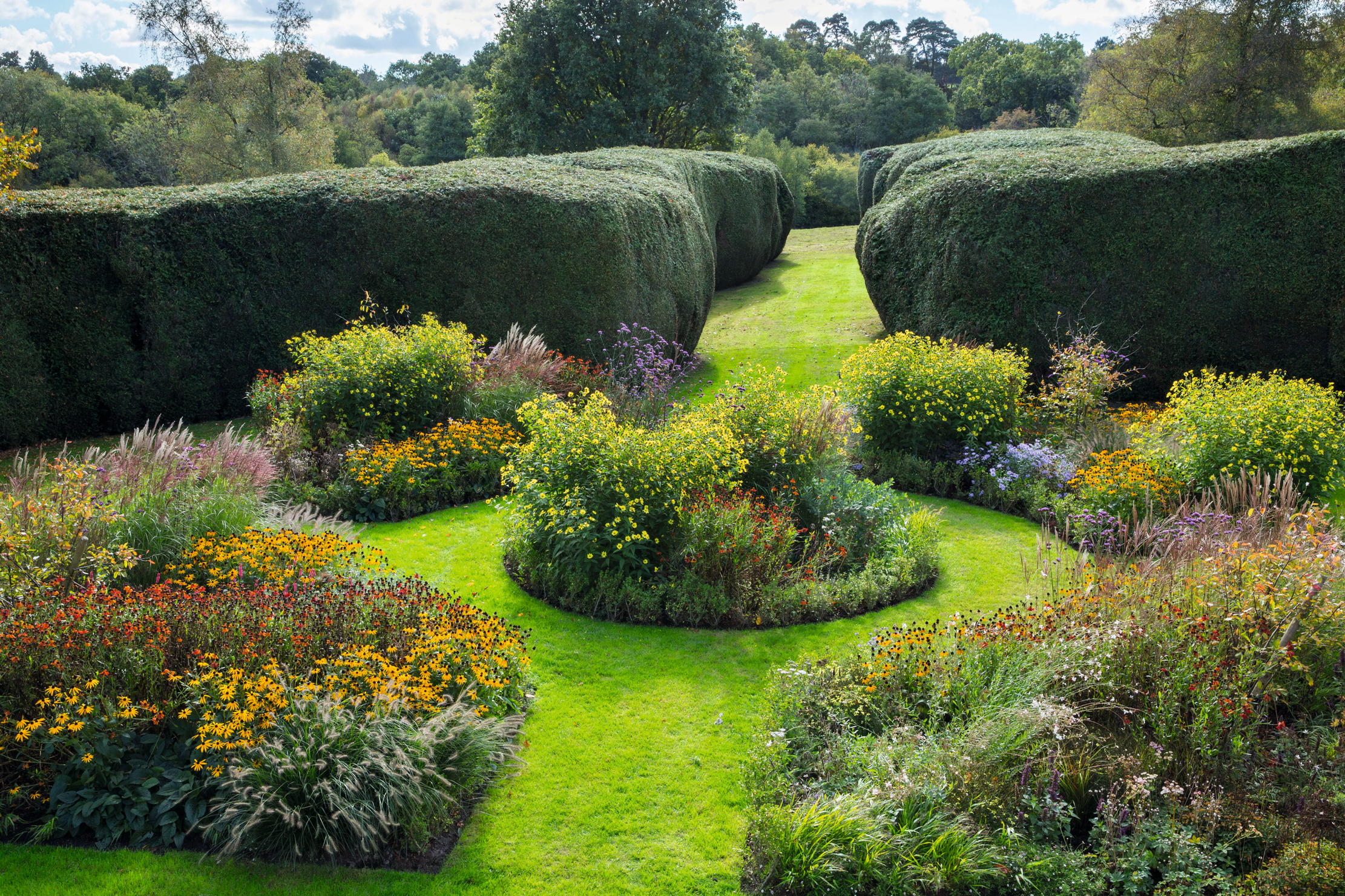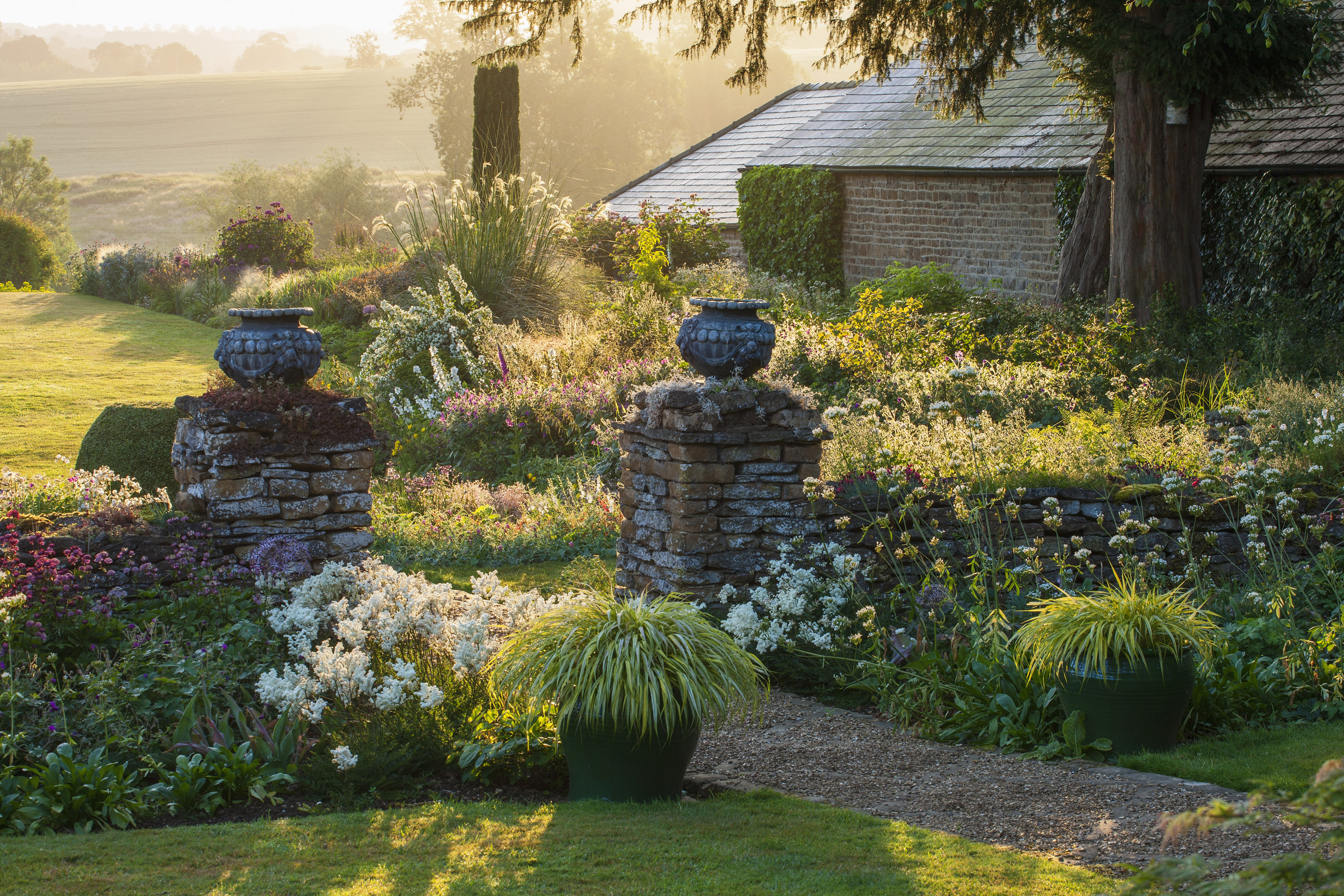Betting your hedges: How taking a risk with your garden hedge could be the most rewarding job you ever do
As old as husbandry hedges may be, but that doesn’t mean they cannot be beautiful, too. Charles Quest-Ritson considers the many options.


The Ancient Britons planted hedges to keep their cattle in, but we plant hedges to keep them out. Thick and thorny plantings were sometimes part of the defence system of an Iron Age hill fort. Later on, hedges were used to define boundaries — not only to keep animals from trampling on their crops, but also to show where ownership begins and ends. They turn up in the Domesday Book and, a little later, were used to create deer parks, which were designed in such a way that, by careful hedging and ditching, deer could get in, but never get out again. And the Enclosure Acts were statements of ownership by the landlords and of dispossession for the peasantry. The history of hedges has much to answer for.
Agricultural hedges are always planted of one type, usually hawthorn or quickthorn. Countryside experts — the sort who live in Hampstead — tell us that you can discover the age of a hedge by counting how many different species you can find in a 30-yard stretch. Every species equals 100 years. But the formula is a load of humbug: birds bring other species much more quickly than that. First to arrive are elder and ivy. Then brambles, dog roses, ash, holly and sycamore join the party, certainly within 10 years of planting, probably within five. Keeping a hedge such as yew or beech immaculately clean and smooth is hard work: the task of maintenance begins as soon as you have planted it. And it never ends.

How to take a chance on getting your hedges better
Should your boundary hedge be neatly trimmed? That is how most farmers and garden owners like them. February and March are prime time for farmers’ hedge-cutting; the torn and ragged stems may look as if they have been tortured, but everything springs into life soon afterwards and, by June, the hedge appears as neat and compact as anyone could wish.
If you have let a hedge grow untended for several years, you may wish to gamble by having a go at laying it. Be warned: it’s not an easy skill to acquire and it takes very much longer than you think.
But it's worth the risk for many: The beauty of it when you finish — and your sense of achievement — make hedge-laying among the most rewarding of country crafts. For more information, visit www.hedgelaying.org.uk.
Hedge history
In the 1440s, Mayster Jon the Gardener’s Treatise gave instructions on how to plant a quickthorn hedge. Quickthorn means hawthorn — Crataegus monogyna or C. laevigata — and it is the preferred choice for free-draining soils, such as sand and chalk. Richard III’s crown was found under a hawthorn bush after the battle of Bosworth Field. The blackthorn, Prunus spinosa, is quite different — a close relation of the damson, but with fiercer thorns than hawthorns — and it forms a tangle of twiggy branches that are even more effective as a deterrent to unwelcome trespassers. It’s the shrub that bears sloes in autumn — picking them is a scratchy business — and farmers plant it on wet soils. Often, they mound up the line of the hedge before planting it so that the roots can grow strongly before they push down into soil that is really soggy. But now a word of warning: hawthorn and blackthorn are thorny brutes, which makes them uncomfortable to cut.
Ultimately, it doesn’t really matter what you use for your boundary hedge, so long as it is fit for purpose. Would it be prettier to put up an open wood fence and train wisteria and roses along? Not if they will be munched by cows or horses. The field maple Acer campestre is a good compromise because it looks beautiful, especially in autumn and, being a native plant, it makes a proper link between your garden and the hedgerows beyond.
Exquisite houses, the beauty of Nature, and how to get the most from your life, straight to your inbox.

Hedges are as old as husbandry, but they can also be ornamental. The Romans planted dainty hedges of box. The Italians took up the idea during the early Renaissance and then the French went over the top with their vast, elaborate parterres de broderie. Ornamental hedging, whatever its height, will not deter cattle and other ruffians, but they do make a suitable background for your beautiful combinations of roses and herbaceous plants.
In Victorian times, our ancestors rediscovered topiary and one of the most satisfying ways of creating your own is to allow selected stems to grow up from the top of a hedge so that they can be shaped. Yew is particularly suitable for this sort of artistry and it relieves some of the tedium of giving hedges the straight top and flat sides (or ‘faces’ as the experts call them) that are the right shape for good, even growth.
A new hedge must be cut back repeatedly so that it does not go bare at the bottom. Then, as it grows up, you need to slope the sides so that the lower parts are not put into shade by the top growth. You cannot start your topiary until the hedge reaches its intended height, but yew is a faster grower than people think and the shapes you have in mind for it will soon begin to form. Sir John Heathcoat-Amory topiarised his yew hedges at Knightshayes in Devon to show his hounds in pursuit of a fox. Happily, the National Trust has had the good sense to retain this un-woke anachronism.

Loose hedges
Loose hedges have their place in many gardens. They will not be stock proof, but they will give much pleasure to the eye. Good evergreens for this are cherry laurel, Portugal laurel, choisya, laurustinus, phillyrea and osmanthus — although the laurels are best pruned with secateurs, because they look a mess when a hedge-trimmer cuts through a leaf, leaving half of it still hanging on the plant.
And more people should try camellias — the miles of camellia hedging that surround the Imperial Palace compound in Tokyo are worth copying. Many gardens in northern Portugal and Galicia have fine camellia hedges, old and tall, which always manage to produce a few flowers, no matter how fiercely they are pruned. Berberis, cotoneaster and escallonia also make good evergreen hedges, but they tend to push out some fast-growing shoots, which means that they require more frequent pruning. So do privet and Lonicera nitida, both of them excellent shrubs that are out of fashion because they need too much clipping. Incidentally, the RHS has renamed the latter (and given it the kiss of death) so that it must now be called Lonicera ligustrina var. yunnanensis.

Trying different hedge options
Best of all for garden hedges are beech (for dry soils) and hornbeam (for richer soils, such as clay). Almost all hedges are planted using one variety. Hidcote has purple beech interplanted with green and sometimes people display their cleverness by planting mixed hedges composed of lots of different species. The trouble is that they usually look lumpy and uneven, because they grow at different rates — which also means more maintenance. The consensus seems to be that hedges should be composed of only one species. Those fashionable Dutch gardens that display a mess of herbaceous plants work best if they are contained by crisply clipped yew, which can then be cut in any shape you fancy, from battlements and pilasters to sweeping curves and soaring polygons.
And you don’t have to stick with the conventional choice of hedging plants. Forsythia, chaenomeles, Prunus x blireana and Viburnum x bodnantense will all make good deciduous flowering hedges. Pittosporum tenuifolium, holm oak and variegated elaeagnus are useful evergreens. And, for something really wacky, think of the hedges of cacti and phormiums that gardeners plant in Mediterranean climates. They may not flourish in Ashby-de-la-Zouch, Leicestershire, but they might work in London and protect you from urban foxes and felons.
A final point. Hedges quickly form part of the wider wildlife scene. They provide food and shelter for birds and animals throughout the year. By the time they are 3ft–4ft high, you will begin to find that birds are making their nests in them. New life among the twiggery that you planted so recently — it is a magic moment.

Clive Nichols: Secrets from the king of garden photography
Britain's top garden photographer Clive Nichols joins the Country Life podcast.

Nevill Holt, Leicestershire: 'After 700 years of ups and downs, finally entering its prime'
The reimagined gardens at Nevill Holt, Leicestershire, have stepped into the limelight to offer a powerful overture to the summer
Charles Quest-Ritson is a historian and writer about plants and gardens. His books include The English Garden: A Social History; Gardens of Europe; and Ninfa: The Most Romantic Garden in the World. He is a great enthusiast for roses — he wrote the RHS Encyclopedia of Roses jointly with his wife Brigid and spent five years writing his definitive Climbing Roses of the World (descriptions of 1,6oo varieties!). Food is another passion: he was the first Englishman to qualify as an olive oil taster in accordance with EU norms. He has lectured in five languages and in all six continents except Antarctica, where he missed his chance when his son-in-law was Governor of the Falkland Islands.
